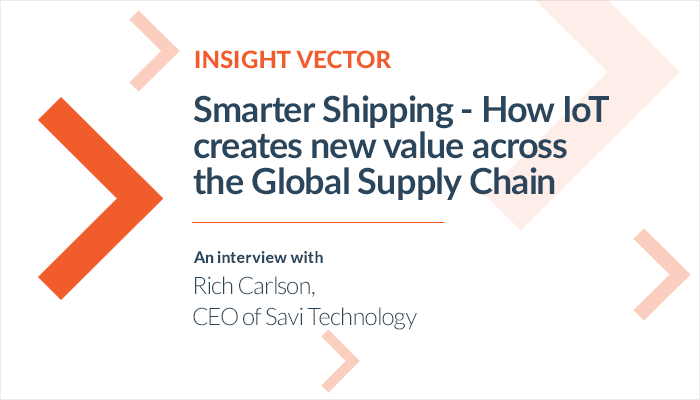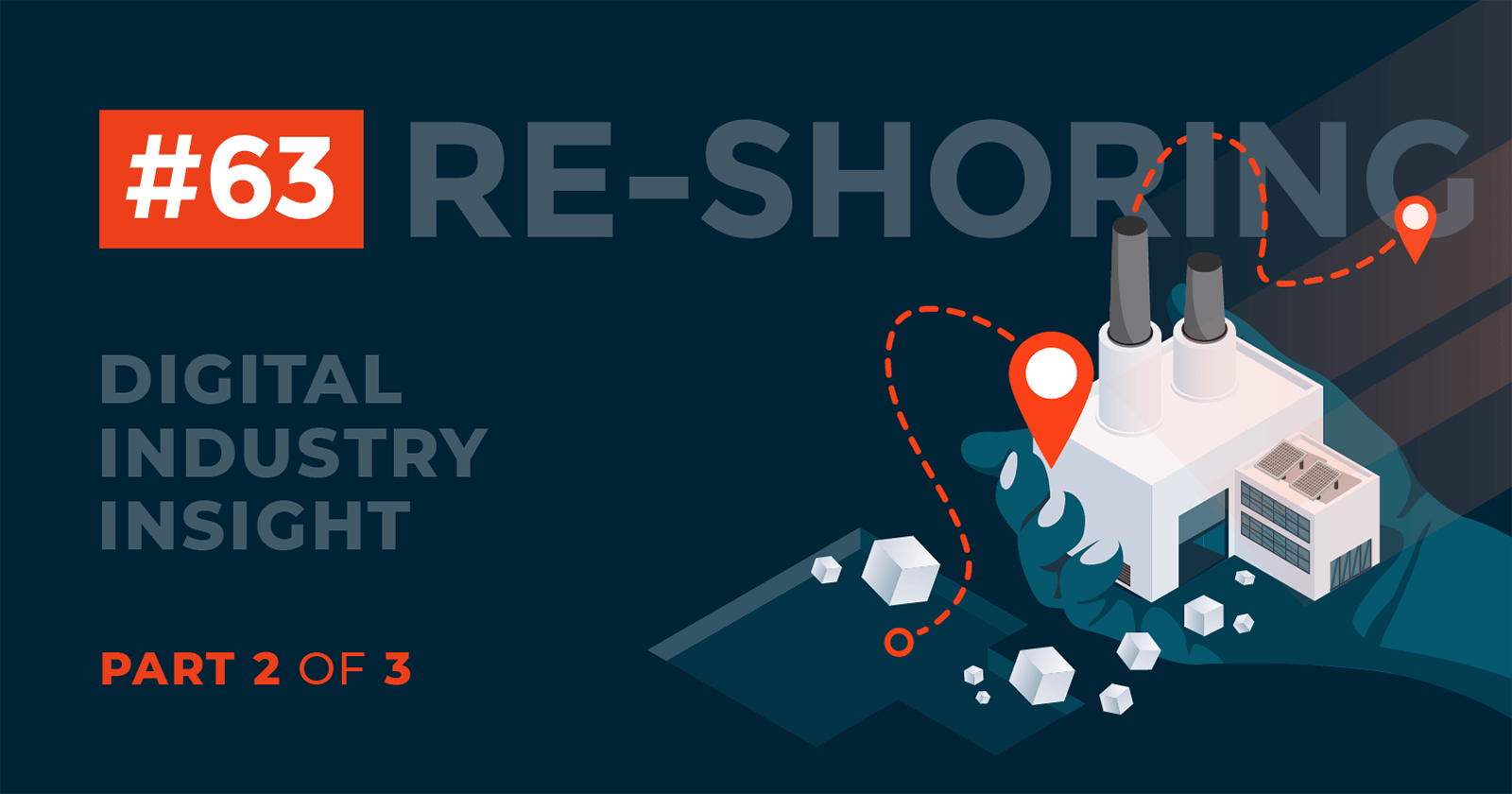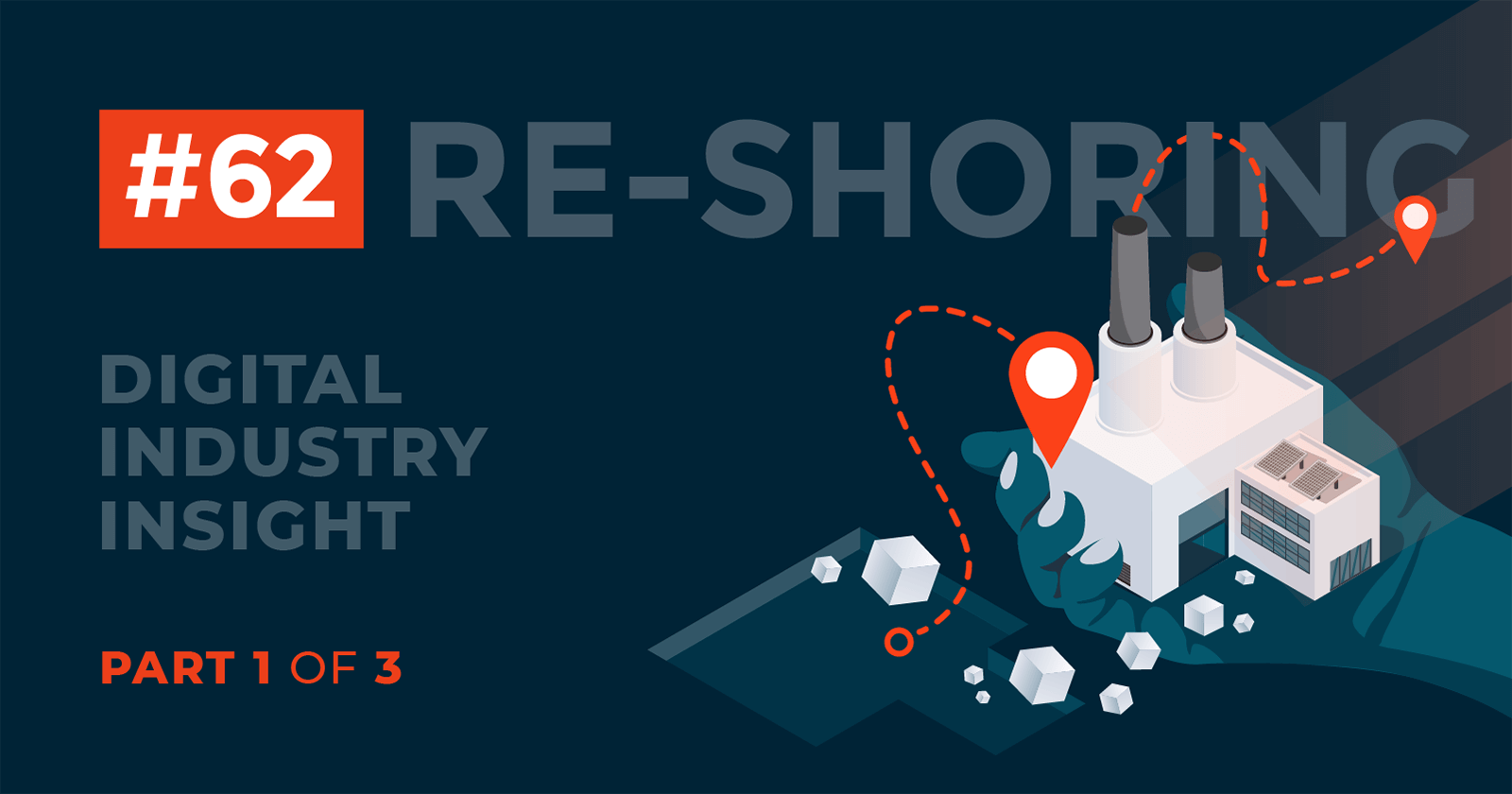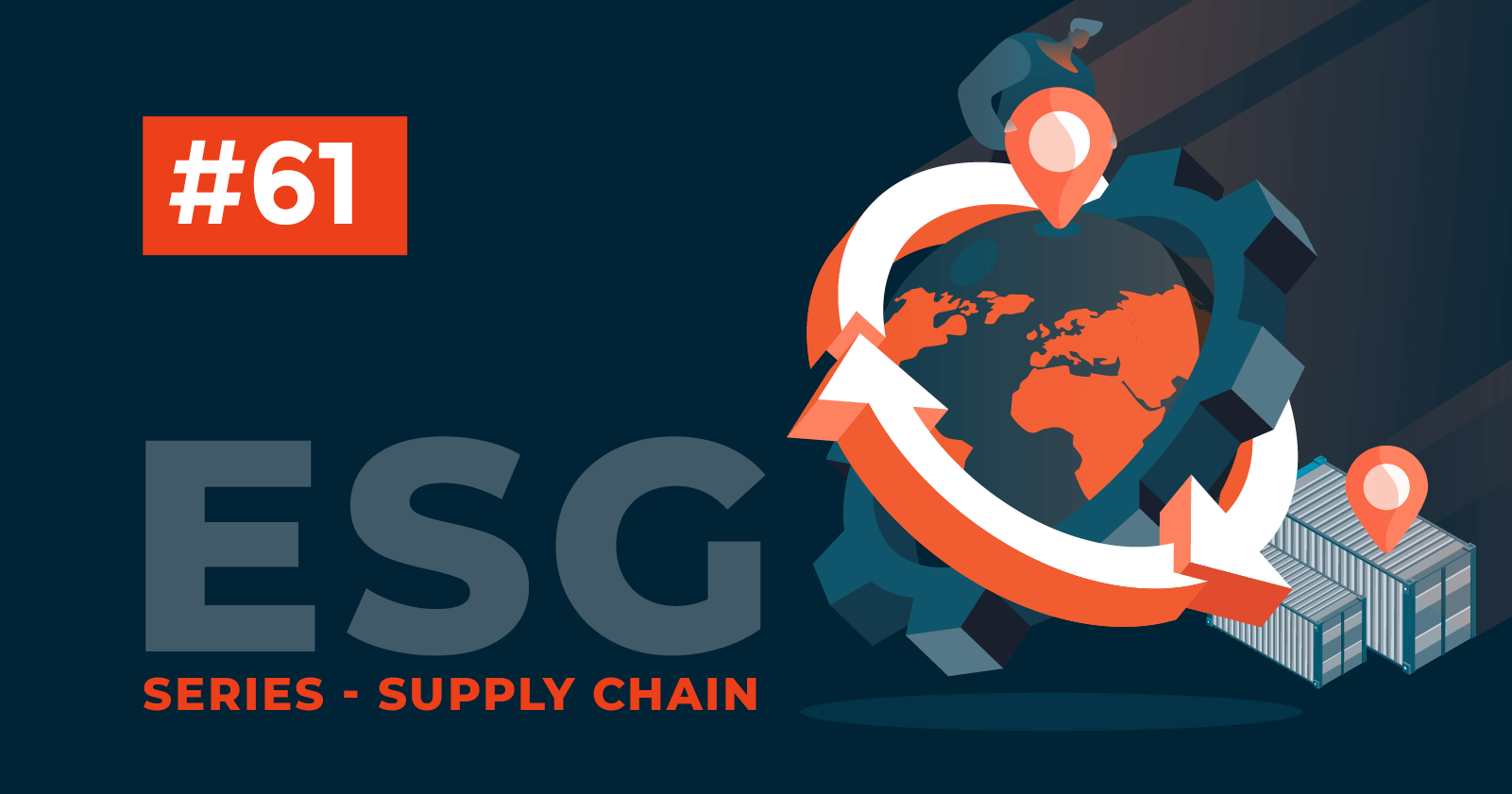Insight Vector: Smarter Shipping, How IoT Creates New Value Across the Global Supply Chain, An Interview with Rich Carlson
Ed Maguire

 Innovation and market perspectives from leading IOT innovators
Innovation and market perspectives from leading IOT innovators
We spoke with Rich Carlson, CEO of Savi Technology, which provides IoT solutions, devices and applications to industries including shipping and logistics, pharmaceutical, food service, military and defense. Momenta Partners placed him as CEO of Savi in March of this year.
He highlighted the importance of flexible analytic platforms to translate massive amounts of raw data into actionable intelligence for decision makers. Savi has deep expertise tracking global shipping, and CTO Jim Haughwout’s blog analysis of the collision of a Navy vessel in Japanese waters highlights the extraordinary insights available from large scale deployment of sensors.
|
|
Rich Carlson |
Rich Carlson brings more than 20 years’ experience in the software and wireless space to Savi. In 2012, Rich founded the Neon Dolphin Technology Group, a consultancy that advises and helps grow IoT (Internet of Things) and software firms. Before founding Neon Dolphin, Carlson spent eight years as CEO at Wireless Matrix Corporation, where he transformed the business from a niche satellite provider to a leader in the fleet management SaaS (software-as-a-service) industry. Born and raised in New York, Carlson has a B.A. in History from the University of Virginia, and an M.B.A from Georgetown University.
What does the Internet of Things mean to you?
Everything that is in motion or that’s producing data ends up transmitting data into the cloud - where companies like Savi run that data through algorithms and mash it into formats so human beings can make sense of it - in ways that were not possible 10 years ago. A massive amount of data can be distilled into the 5 to 7 things a decision maker needs to make decisions. Because of this, companies can get tremendous leverage from people because analytics software is doing so much of the data screening.
How does Savi’s expertise in sensors shape the vision of your solutions?
We believe within a decade, every single thing being shipped – whether it’s a product, box, pallet or container - will be tracked in real-time, so no matter how many global intermodal handoffs there are, there’s no reason to lose visibility of any inventory. The sensors provide the physical tracking of the assets, just as a cellphone enables wireless services. Savi’s Software as a Service delivers value by combining location and sensor data from shipments with other data to help make decisions and manage the global supply chain. If a shipment will be late, what is the best way to inform customers and sales people so they can make alternative plans? With a rich data set you can do analysis, find shipping modes that might be too expensive and identify shipping lanes or carriers that cause the most problems.
How are different industries leveraging connected shipping solutions?
We started with the US Government and Department of Defense; they are some of the biggest shippers in the world. If something goes wrong on a military shipment the stakes are so high. What our military customers need are solutions that operate in remote parts of the globe with 99.99% reliability. The requirements translate well to commercial customers that ship high-value materials.
Our biotech/pharmaceutical customers ship pallets worth millions of dollars. They want to know that products are safe and carriers are compliant with standards such as not shipping through certain ports. In high-value shipping, where every handoff is a risk, IoT reduces that risk. If a truck with millions of dollars of pharmaceuticals is stopped for too long, security might want to investigate. We have another customer in pharmaceuticals that distributes through Amazon, while Amazon is also a competitor. IoT allows them to manage a global supply chain with multiple moving parts and beat their competition by avoiding costly out of stock situations.
What forces will accelerate adoption of IOT solutions?
It’s an exciting time to be a customer because the pricing is declining by step functions. We launched a sensor that can track global shipments. It’s an intelligent sensor that knows when it’s on the sea, and the latest version turns off the sensor to conserve battery life. It used to cost $200 to track a shipment; now the price has declined to $50 with reusable sensors, and over time it will continue to drop. Software as a Service eliminates version control demands so it’s easier to buy. We build our applications using cutting-edge big data technologies, and some of the open source Big Data and Machine Learning technologies are extraordinary.
Scale is no longer an issue – we are ingesting data on every ocean-going vessel right now – you couldn’t do this 15 years ago without mainframes or supercomputers. I am amazed how powerful solutions are that enable you to ingest massive amounts of data, write algorithms for a specific industry and create value in ways that were impossible 3 to 4 years ago (when it was too much data to manage or the price of the technology was too high). It’s a great time to be a change agent at a major shipper.
What are key obstacles that you’ve encountered?
The global supply chain recovered more slowly from the great recession than other sectors and as a result there is a lot of activity involved in upgrading legacy systems and the pace varies. In some ways, the technology is ahead of customers’ ability to manage it. From an organizational perspective, there may be employees performing tasks that can be automated, with political constituencies that resist changes from people that want to be more efficient. If there is a bottleneck from an industry perspective, it’s finding enough skilled data scientists and developers that can make sure that data is packaged and presented in a value-added way.
Where do you see as key changes ahead?
It’s going to be exciting! Whatever business you’re in will need a big data and IoT strategy. The way you think of competitors will change. Who would think that Amazon would ever compete with Kroger?
Companies need to get really good at secondary or tertiary functions like back office. Organizations will need to establish their own groups to disrupt themselves. If you don’t disrupt yourself, someone like Amazon will come into your industry using Big Data and IoT. You especially need the right partners because you can’t build these solutions yourself. We see so many opportunities and it's exciting, but it’s at the early stages where we need to lead customers.
Last thing, I’d like to highlight something that highlights how IoT data can be used in creative ways. Our CTO, Jim Haughwout wrote a blog about the collision between the Navy vessel and the private vessel. The Collision Between the USS Fitzgerald and the MV ACX Crystal: A “Hit and Run” at Sea, as Detected by Sensors provides an analysis of what happened using IOT sensor data. It’s a really interesting piece, and it’s just a hint of what’s possible with new types of sensor data.




